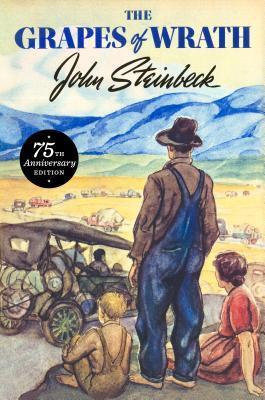
The Grapes of Wrath Summary of John Steinbeck's Book

The Grapes of Wrath: A Classic Tale of Struggle and Resilience
Published in 1939, John Steinbeck's The Grapes of Wrath is a literary masterpiece that captures the essence of the Great Depression and the struggles faced by the common people during that era. Set against the backdrop of the Dust Bowl migration of the 1930s, the novel tells the story of the Joad family as they are driven from their home in Oklahoma and forced to travel west in search of a better life. Throughout the novel, Steinbeck weaves a narrative of hardship, resilience, and the fight for justice in a world that is fraught with inequality and injustice.
Characters
- Tom Joad: The protagonist of the story, Tom is a former inmate who returns to his family's farm only to find that they have been evicted. He becomes the backbone of the Joad family as they journey to California.
- Ma Joad: The matriarch of the Joad family, Ma is a strong and determined woman who holds the family together in the face of adversity.
- Rose of Sharon Joad Rivers: Tom's pregnant sister who symbolizes hope and renewal in the midst of suffering.
- Jim Casy: A former preacher turned labor organizer who accompanies the Joad family on their journey.
- Uncle John Joad: Ma's brother-in-law who grapples with guilt and sorrow over the death of his wife.
- Al Joad: Tom's brother who dreams of a better future in California.
- Granma and Grampa Joad: The elderly grandparents of the Joad family who face numerous challenges on the road.
Summary
In The Grapes of Wrath, the Joad family is forced to leave their farm in Oklahoma due to the economic hardships of the Great Depression. Along with thousands of other "Okies," they head west on Route 66 in search of work and a better life in California. The journey is arduous and filled with challenges, including hunger, poverty, discrimination, and exploitation by wealthy landowners.
As the Joad family struggles to survive, they encounter various characters who offer both help and hindrance along the way. Tom Joad emerges as a leader among the migrant workers, fighting for their rights and dignity in the face of injustice. Along the journey, the family faces tragedies, losses, and setbacks, but they also find moments of hope, solidarity, and resilience as they come together to weather the storm of the Great Depression.
Analysis
The Grapes of Wrath is a powerful exploration of the human spirit and the inherent desire for justice and equality. Steinbeck's portrayal of the Joad family and their struggles is a poignant reminder of the resilience and tenacity of ordinary people in the face of adversity. Through vivid imagery and compelling storytelling, the novel offers a critique of capitalism, exploitation, and the social injustices of the time.
Steinbeck's use of symbolism, themes, and motifs enrich the narrative and provide deeper insights into the human condition. The title of the novel itself is a reference to the biblical passage about the wrath of God, suggesting a divine retribution for the injustices faced by the poor and marginalized. The grapes symbolize the fruits of labor and the struggle for survival in a harsh and unforgiving world.
Overall, The Grapes of Wrath is a timeless classic that continues to resonate with readers today. Its themes of resilience, solidarity, and the fight for justice are as relevant now as they were during the Great Depression. The novel remains a testament to the enduring spirit of humanity in the face of adversity.
Final thoughts
If you enjoy stories that delve into the complexities of human nature, the struggles of ordinary people, and the quest for justice, then The Grapes of Wrath is a must-read. This Pulitzer Prize-winning novel is a literary masterpiece that will leave a lasting impact on readers of all ages. To fully experience the beauty and depth of Steinbeck's storytelling, consider purchasing the complete book or listening to the audiobook for a truly immersive experience.
9780670016907 (ISBN10: 067001690X)






Related Books